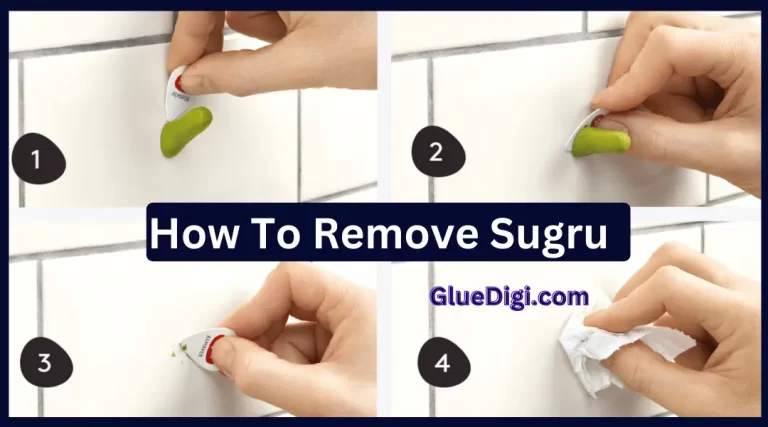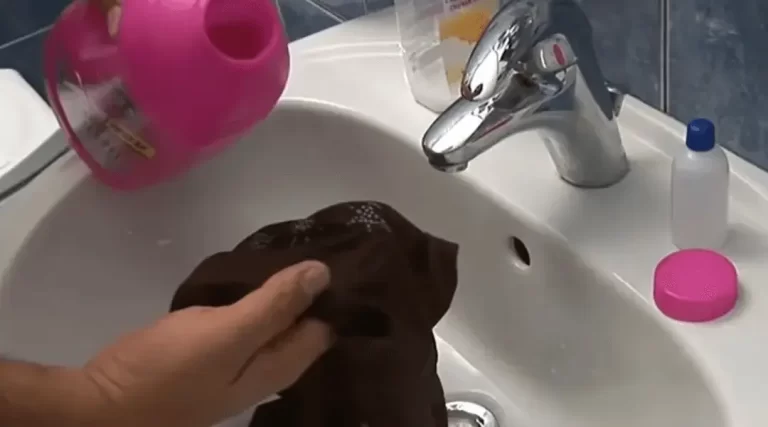You’re sitting at home, enjoying a snack or maybe even just brushing your teeth, when suddenly you hear a crunch. Your heart sinks as you realize that you’ve just broken a tooth.
You panic, wondering what to do next. Can you glue the broken tooth back on? Is that even possible?
The good news is that in some cases, gluing a broken tooth back on can be a viable option. However, it’s important to understand the risks and limitations of this approach, as well as when it might be appropriate to attempt it.
In this article, we’ll explore the process of gluing a broken tooth, as well as alternatives and preventive measures you can take to avoid tooth damage in the first place.
So take a deep breath, relax, and let’s dive in.
The Risks of Gluing a Broken Tooth Back On
Be careful, attempting to reattach a damaged tooth on your own can pose significant risks. While it may seem like a quick fix, there are potential complications such as infection, further damage to the tooth, and even long term damage to the surrounding teeth and gums.
It’s important to seek professional dental care to ensure that the tooth is properly reattached and that any underlying issues are addressed. However, there are situations where gluing a broken tooth back on might be appropriate.
Let’s explore those in the next section.
When Gluing a Broken Tooth Might Be Appropriate
If you have a minor chip or crack in your tooth, gluing it back on may be appropriate. This can provide a temporary fix until you’re able to seek professional treatment. Gluing a broken tooth back on should only be done as a temporary solution. You should still see a dentist as soon as possible.
Minor Chips or Cracks
You may notice small imperfections in your tooth, such as tiny chips or cracks that don’t cause any pain or discomfort. While these minor issues may not require immediate professional treatment, they can still be bothersome and affect the appearance of your smile.
Fortunately, there are cosmetic options available to fix these imperfections, such as dental bonding. However, if you prefer a DIY remedy, there are temporary dental adhesives that can be purchased at your local drugstore. Keep in mind that these temporary fixes aren’t a long-term solution and should only be used until professional treatment is available.
It’s important to consult with your dentist to determine the best course of action for your specific situation.
Temporary Fix Until Professional Treatment is Available
When it comes to those minor chips or cracks in your teeth, sometimes a quick fix is needed until you can see a professional – after all, you don’t want to be caught with egg on your face!
One temporary fix that you can do at home is to use a temporary filling material, which can be found at most drugstores. This material is easy to use and can help protect the affected tooth until you can see a dentist. However, it’s important to remember that this is only a temporary solution and that DIY dental care should never replace professional treatment.
Speaking of which, the process of gluing a broken tooth back on is a delicate one that requires the expertise of a trained dental professional.
The Process of Gluing a Broken Tooth
If you’re considering gluing a broken tooth back together, there are a few key points to keep in mind. First, you’ll need to thoroughly clean and prepare the tooth before applying the adhesive. This will involve removing any debris or bacteria from the area.
Next, you’ll carefully apply the adhesive and secure the tooth in place until it’s fully bonded.
Cleaning and Preparing the Tooth
Cleaning and preparing the damaged tooth is essential in ensuring a successful reattachment process. Before gluing the broken tooth back on, you need to clean it thoroughly to remove any debris or bacteria that may have accumulated in the area. Use a soft-bristled toothbrush and toothpaste to gently clean the tooth.
Rinse your mouth with warm water to flush out any leftover debris.
After cleaning, you need to prepare the tooth surface for bonding. This involves roughening the surface of the tooth to create a better bonding surface for the adhesive. A dental drill or sandpaper can be used to create a rough surface.
Once the tooth is cleaned and prepared, you can move on to applying the adhesive.
Applying the Adhesive
Applying the adhesive is where the magic happens – it’s the moment where the tooth becomes one with its missing fragment. But before you start, you need to choose the right adhesive. There are many types available, but the most common one is dental resin. This material is strong and can bond the tooth back together seamlessly.
Once you have the adhesive, it’s important to follow proper application technique. First, you need to dry the tooth with a small amount of air. Then, apply the adhesive to the missing fragment and carefully place it back onto the tooth. Hold it in place for a few minutes until the adhesive begins to set. After that, you can use a curing light to harden the adhesive completely.
It’s important to be careful during this process as any mistakes can result in an uneven or weak bond. With the right adhesive and technique, you can successfully glue the broken tooth back on.
Now, onto securing the tooth…
Securing the Tooth
Now that you’ve applied the tooth adhesive, it’s important to secure the tooth in place. Make sure it’s aligned properly and hold it in place for a few minutes until the adhesive sets.
If the tooth is wobbly, you can use orthodontic wax or sugarless gum to add extra support. However, keep in mind that this is only a temporary fix and you should seek emergency dental care as soon as possible.
Gluing a broken tooth back on is not a long-term solution, and there are alternatives to consider. Let’s explore some of these options.
Alternatives to Gluing a Broken Tooth
You’ll want to explore other options for fixing your tooth, as simply gluing it back together may not be the best solution for your long-term dental health. There are alternatives to gluing a broken tooth, such as dental bonding or porcelain veneers.
Dental bonding involves using a tooth-colored resin to repair the tooth, while porcelain veneers are thin shells that are custom-made to fit over the tooth. Both of these options can provide a more long-lasting solution to a broken tooth than simply gluing it back together. Additionally, they can also improve the appearance of the tooth, which can be a concern if the break is visible when you smile.
As you consider your options, keep in mind that prevention is always the best course of action when it comes to dental health. By taking steps to prevent broken teeth, such as wearing a mouthguard during sports or avoiding hard foods, you can reduce your risk of needing any of these treatments in the first place.
Preventing Broken Teeth
If you want to prevent broken teeth, there are a few key things you can do. First, make sure to wear a mouthguard during physical activity, especially contact sports. This will protect your teeth from impact and potential fractures.
Second, try to avoid hard foods and objects that could also cause damage to your teeth.
Finally, make sure to schedule regular dental checkups to catch any potential issues before they become more serious. By taking these steps, you can help keep your teeth strong and healthy for years to come.
Wear a Mouthguard During Physical Activity
It’s a good idea to wear a mouthguard when playing sports or engaging in physical activity to protect your teeth from potential damage. There are many benefits of wearing a mouthguard, including preventing broken teeth, chipped teeth, and even tooth loss.
Different types of mouthguards are available, so it’s important to choose the one that fits you best and provides the necessary protection. Mouthguards not only protect your teeth, but they also help prevent jaw injuries, concussions, and neck injuries.
Remember, a mouthguard is your best defense against oral injuries, so make sure to wear one every time you engage in physical activity. By wearing a mouthguard, you can enjoy your favorite sports and activities without worrying about damaging your teeth.
Now, let’s talk about how to avoid hard foods and objects that can also lead to tooth damage.
Avoid Hard Foods and Objects
Avoiding hard foods and objects is crucial to maintaining the health and longevity of your teeth. They can cause serious damage and lead to costly dental procedures. When you chew on hard foods or use your teeth as tools to open packages, you’re putting unnecessary stress on your teeth. This can result in cracks, chips, or even fractures.
Instead, opt for soft food alternatives that are easier on your teeth. For example, cooked vegetables, fruit, and yogurt. Additionally, tooth strengthening techniques, such as mouth exercises and fluoride treatments, can help protect your teeth from damage.
By making a conscious effort to avoid hard foods and objects, you can minimize the risk of tooth damage and save yourself from potential dental complications. Remember, prevention is always better than cure. So, make sure to schedule regular dental checkups to catch any potential issues before they become major problems.
Regular Dental Checkups
Don’t skip out on your regular dental checkups – they’re like a shield protecting your smile! Scheduling routine dental appointments is essential to maintaining healthy teeth and gums.
Not only can your dentist catch any potential problems early on, but they can also provide you with valuable tips and tools to keep your teeth in tip-top shape.
If you struggle with dental anxiety, don’t be afraid to speak up and discuss your concerns with your dentist. They can work with you to make your experience as comfortable and stress-free as possible.
Remember, taking care of your teeth now can prevent severe tooth damage down the road. Speaking of which, if you do experience severe tooth damage, don’t panic – there are treatment options available to restore your smile.
Treatment for Severe Tooth Damage
If your tooth is severely damaged, your dentist may recommend a root canal treatment or dental crown to restore its function and appearance.
Tooth restoration can be done through a variety of methods depending on the severity of the damage.
In some cases, your dentist may recommend an emergency dental care procedure to fix the issue.
However, in more severe cases, a root canal may be necessary to remove the damaged tissue and prevent further infections.
A dental crown can also be placed over the tooth to protect it from further damage.
It’s important to seek professional dental care if you experience any tooth damage to prevent further complications.
Remember, prevention is key, and regular dental checkups can help catch any potential issues before they become more severe.
Conclusion: When to Seek Professional Dental Care
Now that you know the treatment options for severe tooth damage, it’s important to understand when to seek professional dental care.
If you experience any of the following signs of severe tooth damage, such as a broken or cracked tooth, severe pain, bleeding or swelling, it’s crucial to seek emergency dental care right away.
Ignoring these symptoms can lead to more serious complications and even tooth loss. Remember, early intervention is key to saving your teeth and avoiding further dental problems.
Don’t hesitate to contact your dentist if you experience any of these symptoms.
Conclusion
Congratulations! You now have a better understanding of the risks and benefits of gluing a broken tooth back on. While it may seem like a quick and easy fix, there are important considerations to keep in mind before attempting to do so on your own.
It’s important to remember that gluing a broken tooth back on should only be done in certain situations, and should always be done with caution. In some cases, it may be best to seek professional dental care.
Overall, prevention is key when it comes to maintaining the health and integrity of your teeth. By practicing good oral hygiene and avoiding activities that could lead to tooth damage, you can minimize your risk of experiencing a broken tooth in the first place.
As with any medical issue, it’s important to investigate the truth of any theories or claims you come across. By doing so, you can gain a deeper understanding of the topic at hand and make informed decisions about your own health and wellbeing.
So whether you’re dealing with a broken tooth or simply looking to improve your dental care routine, always remember to approach the situation in an informative, strategic, and analytical way.






